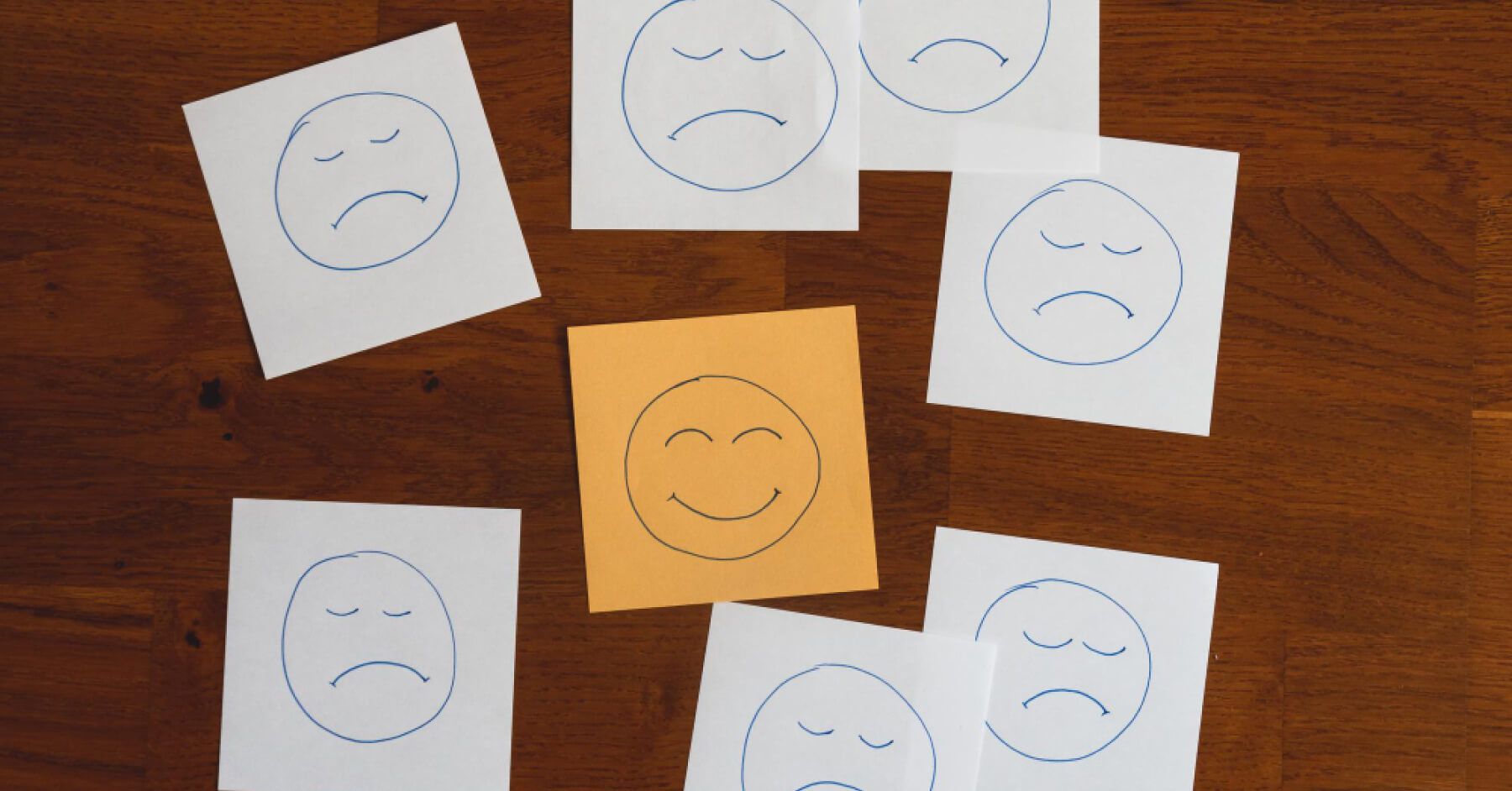Frontline worker burnout signs: How to recognize, prevent, and act before it’s too late

Think of a candle burning brightly in a dark room. At first, the steady flame gives warmth and light, making everything around it feel alive. But left unattended, the wick shortens, the wax thins, and the glow begins to flicker until it finally fades out.
Frontline workers often carry that same intensity—always “on,” always giving, often without pause.
Their dedication keeps operations running, but when exhaustion builds unnoticed, the risk of burnout becomes real. Recognizing the early signs isn’t just about caring for individuals—it’s about preserving the collective energy that keeps the workplace thriving. Prevention starts with awareness, followed by action.
TL;DR
What is burnout, and why is it so common among frontline workers?

TL;DR
Burnout among frontline workers stems from constant high-pressure demands, limited recovery time, and the emotional strain of serving customers or patients daily. These challenges are amplified by unpredictable schedules, resource constraints, and physical workload.
Understanding these root causes helps managers identify frontline worker burnout signs early and create targeted support systems, ensuring employees feel valued, supported, and able to sustain performance without sacrificing well-being.
Burnout is a state of chronic physical, mental, and emotional exhaustion caused by prolonged workplace stress.
Among frontline workers—like retail staff, healthcare workers, and factory crews—it’s especially common due to demanding schedules, constant pressure, limited autonomy, and minimal recovery time.
Over time, this erodes motivation, performance, and overall well-being, often leading to disengagement or turnover, which can be seen as symptoms of burnout.
- Long and irregular hours: Frontline jobs often involve extended shifts, night work, and unpredictable schedules. This disrupts sleep cycles, limits personal time, and leaves workers feeling drained before their next shift even begins. Without consistent rest, recovery becomes impossible, making burnout inevitable.
- High physical and mental demands: From heavy lifting to rapid problem-solving under pressure, these roles require sustained energy. Physical fatigue combines with mental health concerns, especially when safety, deadlines, or customer satisfaction are constantly on the line. Over time, the load becomes unsustainable.
- Low autonomy: Many frontline workers have little control over how tasks are done or when breaks are taken. This lack of decision-making power can create feelings of helplessness, a major driver of burnout and disengagement.
- Limited recognition: Despite carrying out essential, high-effort work, frontline employees often receive minimal acknowledgment from leadership. When effort goes unseen, motivation drops, and stress feels heavier because there’s no emotional payoff.
- High-pressure environments: Frontline roles often run on tight deadlines, with constant interruptions and urgent tasks. Whether it’s a busy retail floor or a critical manufacturing process, the relentless pace leaves little space for recovery during the day.
- Inadequate mental health support: While physical safety is emphasized, emotional well-being is often overlooked. Few workplaces provide mental health programs tailored to the realities of frontline work, leaving employees to navigate stress without the tools or resources they need.
If burnout is so widespread among frontline staff, what are the earliest red flags managers should look for before it escalates?
What are the early warning signs of burnout in frontline teams?

Burnout doesn’t slam into frontline teams all at once—it sneaks in, often camouflaged as “just being tired” or “having a rough week.” But small signs, if ignored, can quietly chip away at morale, performance, and even safety. Catching them early gives you the chance to turn things around before they spiral into experiencing burnout.
1. Persistent fatigue
When a frontline employee starts each shift looking and feeling drained, even after days off, it’s more than simple tiredness—it’s emotional and physical depletion. This kind of fatigue lingers no matter how much they sleep, often a sign of chronic workplace stress. Over time, it slows reaction times, dampens problem-solving abilities, and makes once-manageable tasks feel overwhelming.
2. Decline in work quality
Burnout affects concentration and sharpness, leading to mistakes that seasoned employees wouldn’t normally make. In frontline roles, this could mean wrong orders, safety slip-ups, or incomplete checklists. At first, it might seem like an off day, but repeated lapses can strain coworkers, frustrate customers, and increase operational risk.
3. Increased irritability or withdrawal
Imagine friendly, engaged employees suddenly becoming short-tempered, less talkative, or distant, which can signal emotional burnout. For social workers, stress depletes patience and energy for social interactions, making collaboration harder. Over time, this withdrawal can fracture team dynamics, create misunderstandings, and lead to feelings of isolation—especially in high-pressure frontline environments.
4. Higher absenteeism
Frequent sick days or last-minute call-offs often point to something deeper than a cold or flu. Burned-out employees might use time off as a way to recover from relentless mental or physical strain. This pattern can burden teammates, create scheduling headaches, and slow service delivery, amplifying the very stress that caused the absences, taking away from their personal interests.
5. Loss of motivation
When the spark that once fueled an employee’s commitment fades, burnout may be to blame. Instead of showing initiative, they stick to the bare minimum, avoiding new responsibilities or challenges. This lack of drive can be contagious—if one person’s energy drops, it often drags down the entire frontline team’s morale.
Since early symptoms differ across job roles, how exactly does burnout show up differently in nurses, retail staff, or logistics workers?
How does burnout show up differently in nurses, retail staff, or logistics workers?

Burnout might be universal, but it wears a different mask depending on the frontline role. A nurse’s version won’t look the same as a store associate’s, and neither will match a logistics worker’s. The stressors are unique, the symptoms play out differently, including mental exhaustion, and the ripple effects can hit both people and operations hard.
Nurses
For nurses, burnout often blends emotional exhaustion with compassion fatigue. Long shifts, high-stakes patient care, and constant exposure to traumatic events, illness, or trauma can dull empathy and lead to detachment. They may become more clinical in tone, less patient with families, or slower to respond—changes that can quietly affect quality of care, patient trust, and overall professional efficacy.
Retail staff
Retail burnout often shows up as customer service fatigue. After countless hours dealing with long lines, complaints, and demanding shoppers, employees might lose their usual friendliness and problem-solving patience. Instead of upselling or going the extra mile, they stick to the basics—minimizing emotional investment to survive the shift, but risking job satisfaction without proper self-care tools.
Logistics workers
In logistics, burnout tends to be physical and operational. Long hauls, tight delivery windows, and repetitive lifting wear down both body and mind. Workers may cut corners on safety checks, move more slowly, or show poor concentration and frustration with minor delays. These changes can disrupt timelines, strain supply chains, and heighten accident risks in already high-pressure environments, compromising a healthy work environment.
Beyond role-specific patterns, what physical signs should managers universally watch for when employees are experiencing severe burnout?
What physical signs should managers look out for in burnt-out employees?

TL;DR
Physical red flags of burnout include constant fatigue, frequent headaches, muscle tension, and changes in sleep or appetite—clear physical signs of employee exhaustion. These symptoms often appear before performance drops, making them critical for early intervention.
Spotting these cues allows managers to address frontline worker burnout signs proactively, reducing the risk of long-term health issues and helping employees recover before stress escalates into full burnout.
Burnout isn’t always about attitude or performance—sometimes, the body speaks louder than words. Managers who know the physical red flags can spot trouble before it spirals. These signs often creep in subtly, but together they paint a clear picture that your frontline employee might be running on empty and may require professional help.
1. Frequent headaches
Persistent headaches can signal prolonged chronic stress and tension. When an employee is constantly under pressure, their body may respond with tight neck muscles and migraines. If someone’s reaching for painkillers more often than coffee, it’s worth asking what’s weighing them down, especially if they also experience stomach aches.
2. Unexplained fatigue
This isn’t the “I didn’t sleep well last night” tired—it’s chronic exhaustion that sleep doesn’t fix. Burnt-out employees may look drained even at the start of the day, struggling to stay alert during basic tasks.
3. Muscle aches and stiffness
Prolonged job stress can cause muscles to stay in a semi-tense state, leading to back pain, shoulder stiffness, or general body aches. For physical roles, this can increase the risk of injury or reduce productivity.
4. Changes in appetite
Burnout can disrupt eating habits, leading to skipped meals, constant snacking, or sudden cravings for high-sugar comfort foods. Over time, these shifts can affect both energy levels and overall health.
5. Weakened immunity
When the body is constantly in fight-or-flight mode, the immune system takes a hit. Managers may notice an employee calling in sick more frequently or struggling to recover from minor illnesses.
6. Restlessness or insomnia
Stress-fueled overthinking often shows up as trouble falling or staying asleep. This lack of rest compounds burnout, making it harder for employees to concentrate, stay patient, and maintain physical stamina.
Physical symptoms are only part of the story—so are emotional warning signs like apathy and detachment also part of burnout?
Are emotional symptoms like detachment and apathy part of burnout?

Yes, detachment and apathy are symptoms of burnout in shift workers, and they can be just as damaging as physical ones. When employees reach this stage, it’s not just about being tired; it’s about feeling disconnected from their work and the people around them—something often seen in signs of burnout in healthcare workers and burnout in retail employees, and even linked to depression.
Detachment often shows up as a kind of emotional burnout in frontline teams. A frontline worker who once greeted customers warmly might now keep interactions short and avoid extra engagement. They may stop participating in team conversations or show less interest in solving problems they once took pride in handling.
Apathy, on the other hand, is the slow fade of motivation. Tasks start feeling meaningless, and employees may struggle to see the purpose behind their work. This isn’t laziness—it’s the brain’s way of conserving energy when it’s been running in overdrive for too long, and it’s one of the clearest frontline mental health indicators managers should watch for.
For leaders, recognizing these emotional cues early is critical. Left unchecked, they can spiral into full disengagement, higher absenteeism, and even turnover. Addressing them means creating space for open dialogue, showing empathy, and re-establishing a sense of purpose before burnout deepens—while reinforcing healthy boundaries.
If lack of motivation is tied to emotions, could missing recognition and appreciation be making burnout even worse for frontline employees?
Why lack of recognition worsens frontline employee burnout?
Frontline employees often work in high-pressure, high-demand work environments, yet their efforts can easily go unnoticed. When recognition is missing, it’s like pulling fuel from a running engine—it doesn’t stop immediately, but the decline is inevitable. Over time, this lack of acknowledgment quietly accelerates burnout.
- Feeling invisible in the workplace: Without recognition, employees start to feel their contributions blend into the background. When effort isn’t acknowledged, it can create a sense that their work doesn’t matter, which chips away at morale. This emotional invisibility is a fast track to disengagement.
- No positive reinforcement for effort: Recognition acts as reinforcement, telling employees, “You’re on the right track.” Without it, there’s no feedback loop to encourage employees with continued high performance. Over time, the lack of encouragement can cause motivation to wither.
- Higher emotional exhaustion: Acknowledgment provides small bursts of energy that help employees push through challenges. When that’s absent, the emotional drain of tough shifts, customer demands, and constant pressure feels heavier, increasing the risk of burnout.
- Reduced sense of purpose: Recognition connects daily tasks to the bigger picture. Without it, employees may lose sight of why their work matters. This disconnect can lead to apathy, making even routine responsibilities feel meaningless.
- Increased turnover intentions: When employees feel undervalued, they’re more likely to start looking for workplaces that celebrate their contributions. This not only impacts their engagement but also fuels a turnover cycle that can demoralize the rest of the team.
- Strained team culture: Recognition doesn’t just benefit individuals—it strengthens team bonds. A lack of it can foster resentment, competition, or a “just get through the shift” mindset, all of which deepen burnout across the frontline workforce.
Recognition isn’t the only factor—how do tough shift schedules and long working hours further compound burnout for frontline teams?
How do shift schedules and long hours contribute to burnout?

Shift schedules and long hours can quietly push frontline employees toward burnout by disrupting both their personal lives and physical well-being. Irregular shifts often throw off natural sleep cycles, making it harder for workers to get adequate sleep and restorative rest. Over time, this sleep deficit erodes energy, focus, and resilience.
Long hours also limit the time employees have to decompress or handle personal responsibilities. When work consumes most waking hours, there’s little room for hobbies, family, or self-care—the very things that help maintain mental balance. This imbalance can make each workday feel like an unending loop with no recovery period, making it crucial to maintain boundaries.
In many frontline roles, long shifts mean extended exposure to physically demanding tasks or emotionally taxing interactions. Without adequate breaks or shift rotation, the toll on the body and mind compounds. The constant pressure of “pushing through” exhaustion can make even the most dedicated workers start to dread coming in. Over time, these factors create a perfect environment for burnout to take root, leaving employees drained, disengaged, and far less productive.
How to talk to employees who seem disengaged or exhausted?

TL;DR
Approaching disengaged or exhausted employees requires empathy, active listening, and a focus on understanding their challenges rather than evaluating performance. Creating a safe, judgment-free space encourages openness and honesty.
This approach helps uncover hidden early signs of job burnout and frontline mental health indicators, allowing managers to provide timely support, adjust workloads, and prevent small issues from escalating into full burnout.
Approaching employees who seem disengaged or exhausted requires empathy, tact, and genuine concern. Jumping in with accusations or assumptions can backfire, making them retreat further. Instead, start with open-ended, non-judgmental questions in a private setting where they feel safe to share.
Focus on listening more than talking. Allow them to explain what’s been going on without interrupting or rushing to “fix” things right away. Sometimes, being heard is the first step toward re-engagement.
Show that your concern is for their well-being, not just their output. Use examples of positive contributions they’ve made in the past to remind them of their value. If appropriate, discuss possible adjustments—like workload redistribution, schedule tweaks, or additional employee assistance programs—that could help them recharge.
Avoid generic “cheer up” advice or corporate platitudes. Instead, commit to following up on your conversation and checking in regularly. This ongoing support demonstrates that you’re invested in their long-term health, not just a quick turnaround. When employees see genuine care, they’re far more likely to open up, trust leadership, and begin re-engaging with their work.
What can HR do today to help frontline workers avoid burnout?

Frontline burnout doesn’t happen overnight—it builds up over weeks or months of physical strain, mental stress, and feeling undervalued. HR can’t remove every challenge, but it can put guardrails in place to help employees manage the load with preventive measures before it becomes overwhelming. Here’s what HR can do right now to make a difference in order to prevent employee burnout.
- Implement regular pulse surveys: Quick, anonymous check-ins can reveal early signs of stress and frustration. This allows HR to address issues before they escalate, rather than waiting for annual reviews when the damage is already done.
- Offer more flexible scheduling: Where possible, give employees input into their shifts. Even small changes, like predictable schedules or easier shift swaps, can significantly reduce fatigue and improve work-life balance.
- Provide mental health resources: Access to counseling, stress management workshops, or even a helpline can give workers an outlet to manage stress before it becomes burnout.
- Recognize and celebrate contributions: Simple, timely recognition, whether in team meetings or through digital tools, reminds employees that their work is seen and valued, boosting morale.
- Ensure adequate staffing levels: Understaffed shifts force employees to overextend themselves. Prioritizing proper coverage reduces workload pressure and protects both morale and safety.
- Train managers to spot early burnout signs: Equipping leaders with the skills to notice changes in behavior, mood, or performance helps them intervene early with support and adjustments.
What industries face the highest frontline burnout right now?

Frontline burnout isn’t confined to one sector—it’s creeping into every industry that relies on high-intensity, people-facing work. But some fields are feeling the heat far more than others, with staff shortages, rising demands, and relentless schedules pushing employees to the brink. Here’s where burnout is hitting hardest right now, backed by data and industry reports.
1. Healthcare
Burnout is pervasive among healthcare professionals, with up to 50% of emergency medicine physicians reporting exhaustion. On a broader scale, around 42% of physicians and similar percentages of nurses are affected. Factors like long hours, emotional burdens, staffing shortages, excessive documentation, and lack of control contribute heavily.
2. Transportation & Logistics
Transportation roles are seeing a sharp rise in burnout risk—60% of companies in this sector fell into the higher-risk category in 2022, reflecting a 16% year-over-year increase. Continuous time pressures, tight delivery schedules, and demanding physical labor make this frontline work exceptionally taxing.
3. Hospitality (Retail, Food, Hotels)
Burnout is rampant here: 64% of U.S. hospitality managers report team members quitting due to burnout, and nearly 47% of workers feel they have no work-life balance. Juggling unpredictable shifts, understaffing, and multiple jobs makes emotional exhaustion a constant threat.
4. Manufacturing (including Construction & Blue-Collar Jobs)
Though not rising the fastest, manufacturing remains a critical burnout hotspot. The sector still counts high overall burnout rates—77% in construction and real estate, and 82% in manufacturing and tourism/service roles. Physical demands, safety risk, and poor support systems continually drive emotional and physical strain in manual labor roles.
5. Government & Emergency Services (First Responders)
Burnout risk in government-run sectors jumped 10% to affect 54% of organizations in 2022. In healthcare-adjacent emergency services, 86% of ER nurses meet criteria for compassion fatigue, and over a quarter of paramedics exhibit severe trauma responses. Constant high-stakes pressure and post-traumatic stress disorder drive burnout among frontline emergency professionals.
How to design a burnout recovery plan that your people will actually follow

Burnout recovery plans fail when they feel like just another corporate checkbox. To work, they need to be practical, easy to follow, and grounded in empathy—not jargon. The goal isn’t to overwhelm employees with more “to-dos” but to give them small, actionable steps, including access to mental health care, that help them regain energy, purpose, and a sense of control—a core part of any burnout recovery strategy.
- Start with honest conversations: Begin by creating a safe space where employees can openly share what’s draining them. Skip the performance talk—this is about listening without judgment. Understanding the root causes helps catch early signs of job burnout and makes the rest of the recovery plan relevant and personalized.
- Reduce non-essential workload: Burned-out employees don’t recover by doing the same amount of work at the same pace. Managers need to temporarily remove non-critical tasks or reassign them, giving space for rest and focus on core responsibilities, helping prevent physical signs of employee exhaustion from worsening.
- Encourage structured breaks: Breaks need to be deliberate, not something employees squeeze in between tasks. Build short pauses into schedules—lunch without screens, quick walks, or even short quiet time—to help reset energy levels during the day, especially for burnout in deskless workforce members.
- Reintroduce meaning in work: Burnout often kills motivation because the “why” gets lost. Reconnect employees with the bigger impact of their role—how their work supports customers, the team, or the community—so they feel their efforts matter again.
- Provide mental health resources: Offer easy access to counseling, therapy sessions, or peer support groups. Tools like CultureMonkey for burnout detection make it easier to monitor stress signals in real time and offer help before exhaustion peaks.
- Track recovery progress: A burnout plan isn’t “set and forget.” Check in regularly to see if employees feel more rested, engaged, and supported. Adjust workloads, resources, and expectations as needed to ensure the plan stays effective and leads to sustainable recovery.
Why pulse surveys help you spot burnout early, before it leads to turnover?

TL;DR
Pulse surveys provide quick, frequent check-ins that reveal shifts in morale, workload stress, and engagement—making them ideal for spotting early signs of job burnout before it impacts retention. Short, targeted questions surface hidden frontline mental health indicators that traditional annual surveys often miss.
When paired with tools like CultureMonkey for burnout detection, these surveys give managers real-time visibility, enabling faster interventions that prevent turnover and support long-term employee well-being.
Burnout rarely shows up overnight—it builds quietly until employees either disengage or leave. Pulse surveys give HR and managers a way to spot the warning signs before they reach that point. Short, regular check-ins reveal trends in morale, workload, and stress levels that traditional annual surveys often miss.
- Captures real-time employee sentiment: Because pulse surveys are frequent, they track changes in mood and engagement as they happen. This helps managers notice dips in morale before they become long-term problems.
- Surfaces workload pressure early: Employees often hesitate to say they’re overwhelmed in meetings. Pulse surveys give them a private, low-pressure way to share if they’re stretched too thin, allowing intervention before burnout sets in.
- Tracks recovery after changes: When organizations make shifts—like adjusting schedules or reducing overtime—pulse surveys show whether employees are feeling better or if stress levels remain high.
- Uncovers team-specific issues: Burnout isn’t always company-wide; it can be localized. Pulse surveys highlight which teams or shifts are under the most strain, so support can be targeted.
- Normalizes open feedback: By making regular check-ins part of company culture, employees see feedback as routine rather than risky. This openness makes it easier to raise early burnout concerns without fear of judgment.
Can tech like CultureMonkey help you monitor burnout signals in real time?
Yes, platforms like CultureMonkey can be game-changers when it comes to spotting burnout before it spirals. Instead of relying on once-a-year surveys or gut feelings, they provide continuous feedback loops through pulse surveys, anonymous feedback channels, and engagement tracking. This means HR and managers can see changes in sentiment, energy levels, and workload stress as they happen.
CultureMonkey’s analytics go beyond just collecting responses—they identify patterns and flag potential problem areas. For example, if a particular shift or location consistently reports low morale, managers can step in with targeted solutions before burnout spreads.
The platform also makes it easier for employees to speak up without fear of stigma. Anonymous feedback features give frontline teams, who might otherwise stay silent, a safe space to share how they’re feeling. Over time, this builds a more transparent and proactive culture, where burnout is addressed early rather than after it forces resignations. In short, CultureMonkey helps organizations act before burnout becomes a turnover crisis.
Conclusion
Burnout isn’t just about tired employees—it’s about losing the heart and energy that keep your business moving. For frontline teams, the warning signs can appear fast, and if left unchecked, they can spiral into turnover, disengagement, and costly mistakes. The good news? You don’t have to wait until it’s too late. With the right tools, you can detect burnout patterns early, start meaningful conversations, and make changes that actually help your people thrive.
That’s where CultureMonkey comes in—giving you real-time insights, anonymous feedback, and actionable data to keep your teams engaged and supported. If you’re ready to spot burnout before it hurts your business, it’s time to let CultureMonkey be your early warning system and employee engagement partner.
FAQs
1. How can I tell if my frontline team is burning out?
Look for patterns like increased absenteeism, declining performance, irritability, and detachment from work. Physical signs such as fatigue or frequent illness, along with emotional withdrawal, are also red flags. Regular pulse surveys and one-on-one check-ins can help you spot these trends early before they escalate into full burnout.
2. What’s the difference between stress and burnout at work?
Stress is often short-term and tied to specific tasks or deadlines, while burnout is a prolonged state of emotional, mental, and physical exhaustion. Stress might make employees hyper-engaged temporarily, but burnout leads to disengagement, cynicism, and reduced productivity. Burnout is harder to reverse and usually requires systemic changes rather than just temporary relief.
3. How do I support an employee who shows signs of burnout?
Start with a private, empathetic conversation to understand their challenges. Offer flexible schedules, redistribute workload, and provide access to mental health resources. Recognize their efforts publicly and privately, and follow up regularly. The goal is to show they’re valued, supported, and not alone in addressing their exhaustion or disengagement.
4. Is burnout worse for shift-based or deskless teams?
Both face high burnout risk, but shift-based and deskless teams often deal with irregular schedules, long hours, and limited recovery time. This disrupts sleep, work-life balance, and social connections, making burnout more intense. They also tend to have fewer communication touchpoints with leadership, which can delay recognition of early warning signs.
5. What should a burnout prevention plan include?
A good plan covers workload management, fair shift scheduling, and consistent recognition. It should also offer mental health support, opportunities for employee feedback, and clear career development opportunities and growth paths. Incorporating real-time monitoring tools like CultureMonkey ensures early detection, allowing interventions before burnout leads to turnover or long-term disengagement among your frontline workforce.



